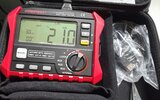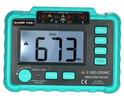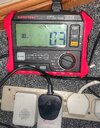- Joined
- 1 Feb 2025
- Messages
- 5
- Reaction score
- 0
- Country

So I moved into an older property and I’ve come to change the wall light fittings in a converted garage that is attached to the house.
The old lights are made from metal and the light switch housing is metal.
I wanted to change the lights to some more modern led lights and also replace the switch for a dimmer switch - sounds like a simple task for a diy’er like myself so I started to disconnect the old lamps and switch.
Although I seem to have uncovered the following;
- one of the wall lights has a black wire which was connected to a a yellow earth wire buried in the wall separate to the main twin and earth cable.. is this some sort of ground wire but using the wrong color wire?


Also just to mention the there seems to be some sort of metal plate buried in the wall behind where the lights were fitted, not sure if that has any relevance? (The black plate hanging from one screw in the image is part of the new light fitting I wrapped in insulation tape.)
In addition the light switch had a plastic facia and a 20mm metal back box. I have removed the old back box, filled the hole with wood and attached a wall mounted plastic back box to accommodate the dimmer switch since there was solid brick behind the original back box.

I wired everything up without connecting that strange black/yellow earth wire to the light fitting and everything worked as it should. My question is though is this safe and should that black/yellow earth be connected to anything?
It seems the new lights are double insulated but safety and potential fire hazard are my main concern here?
Any thoughts appreciated?
The old lights are made from metal and the light switch housing is metal.
I wanted to change the lights to some more modern led lights and also replace the switch for a dimmer switch - sounds like a simple task for a diy’er like myself so I started to disconnect the old lamps and switch.
Although I seem to have uncovered the following;
- one of the wall lights has a black wire which was connected to a a yellow earth wire buried in the wall separate to the main twin and earth cable.. is this some sort of ground wire but using the wrong color wire?
Also just to mention the there seems to be some sort of metal plate buried in the wall behind where the lights were fitted, not sure if that has any relevance? (The black plate hanging from one screw in the image is part of the new light fitting I wrapped in insulation tape.)
In addition the light switch had a plastic facia and a 20mm metal back box. I have removed the old back box, filled the hole with wood and attached a wall mounted plastic back box to accommodate the dimmer switch since there was solid brick behind the original back box.
I wired everything up without connecting that strange black/yellow earth wire to the light fitting and everything worked as it should. My question is though is this safe and should that black/yellow earth be connected to anything?
It seems the new lights are double insulated but safety and potential fire hazard are my main concern here?
Any thoughts appreciated?




